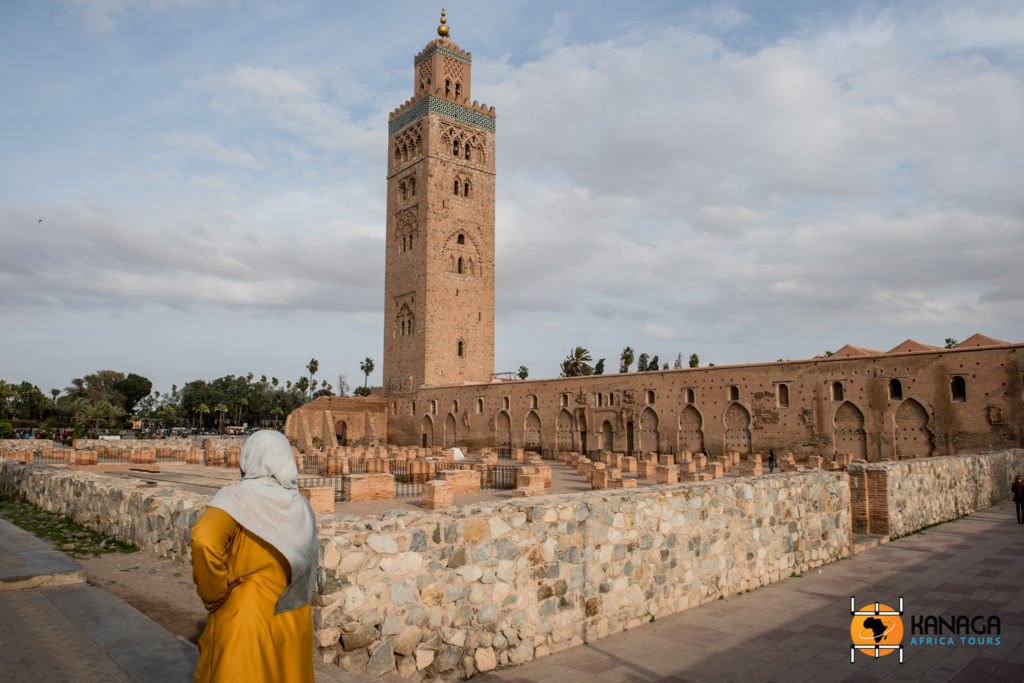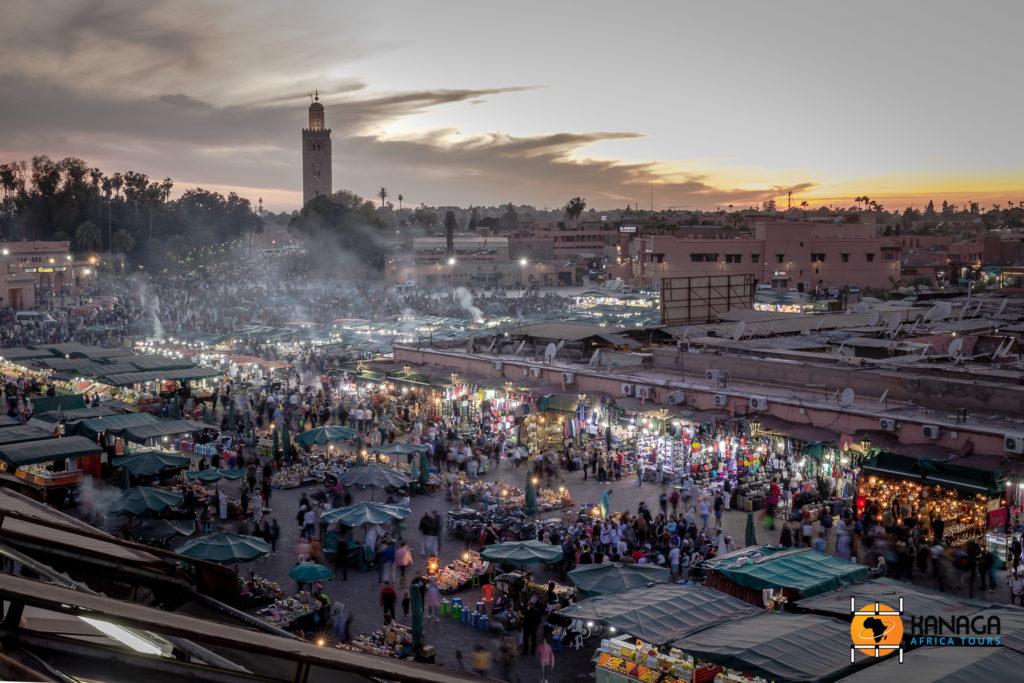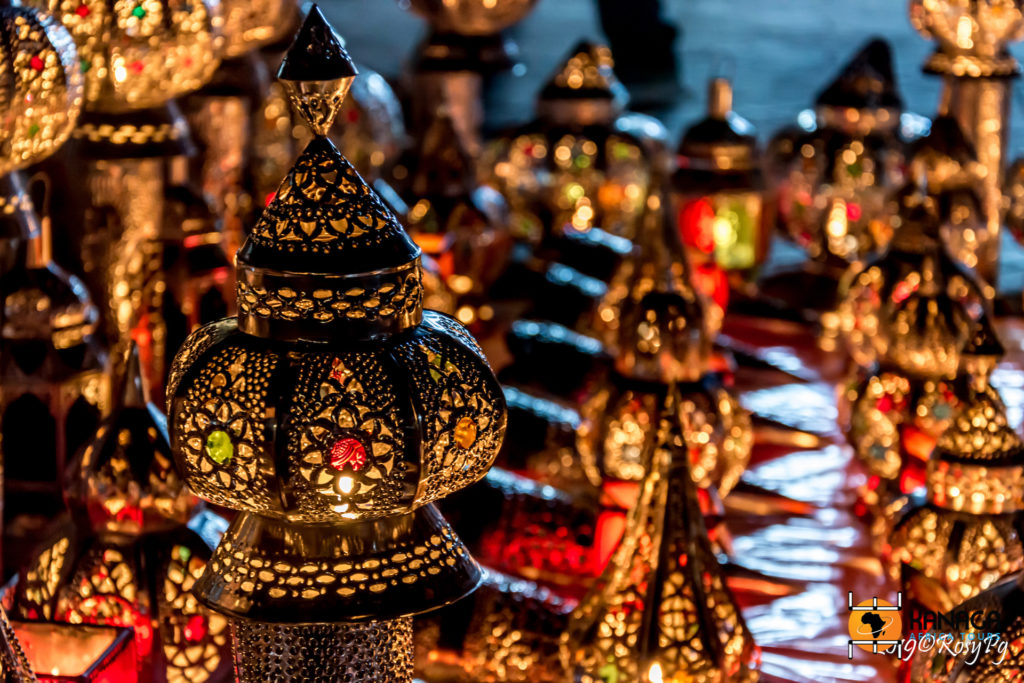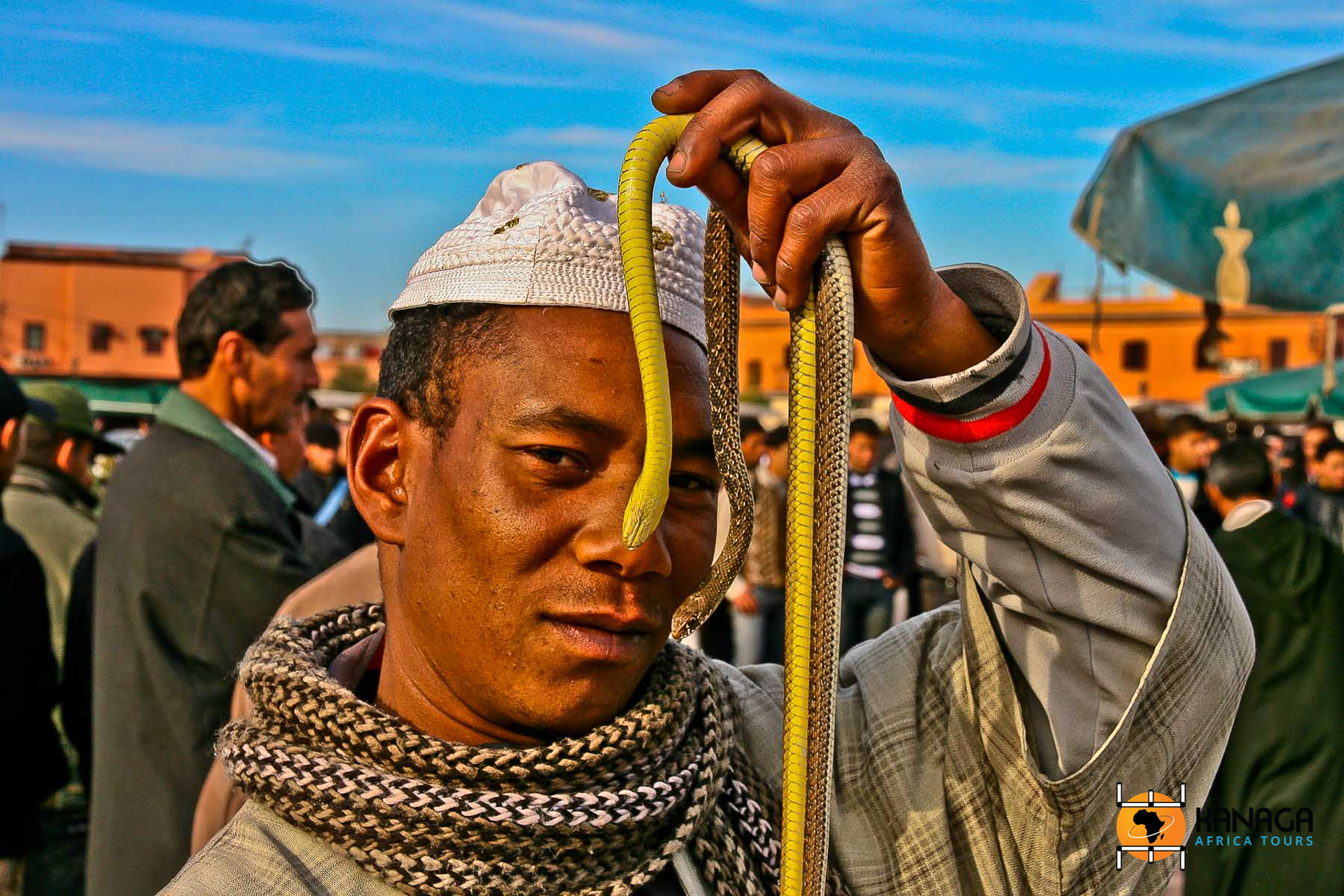© A. Pappone
Marrakech, 1,600,000 inhabitants, is Morocco’s second largest commercial city after Casablanca and one of the country’s main tourist attractions, famous for its medina, the oldest part of the city, with its historic monuments of Berber-Moorish architecture and its colourful and bustling souks.
It was founded in 1062 and 1070 by Yūsuf ibn Tāshfīn, an important general of the Almoravid dynasty. About a century later under the Almohad dynasty, the city began to prosper economically and became an important cultural centre. During this period some of Marrakech’s oldest monuments were built, such as the Casbah and the imposing Koutoubiya mosque. However, after the sacking and destruction of 1220, Marrakech had to wait until the beginning of the 16th century before experiencing new impetus and prosperity. The El-Badi Palace and the mausoleums of the Sa‘didi tombs date from this period. But once again it was razed to the ground during the conflicts between dynasties of the Alawite period, thus remaining for several centuries an important imperial city, more than anything else, for controlling the Berber populations of the south. Another period of commercial flourishing occurred at the end of the 19th century and soon after independence from the French, which led to the city becoming what it is today, visited by thousands of travellers every year.
The heart of the old city is Djemaa el-Fna Square, a UNESCO World Heritage Site where, since the 11th century, a perennial open-air theatre has been staged every day, reciting the oral history and legends of Morocco, from the time when the square was the site of public executions. This is the starting point for the maze of alleys in the Medina to the north, where it seems impossible to find your way around. Nooks and crannies, small squares and narrow streets, all kinds of shops and Riads (houses), acrobats, Gnaoua musicians, snake charmers, carts and street vendors, spices, smells, colours and noises that fill the senses. All this makes the Medina and the Djemaa el-Fna square the favourite destination for travellers who want to be enraptured by the exotic atmosphere of Marrakech.
The landmarks in the midst of this whirlwind of streets are the historical monuments, ancient splendours, testimonies to Marrakech’s past glories: the marvellous 14th-century Ali Ben Youssef Medrasa, a perfection of carvings, stuccoes and mosaics, for what was one of the most important centres of Islamic culture in North Africa; the Koutoubiya Mosque, with its 12th-century minaret, the oldest intact to date, a prototype of the Giralda in Seville and the Hassan Tower in Rabat; the Sa‘Didi Tombs, a sumptuous mausoleum, of which the Hall of Twelve Columns shows an incredible wealth of Carrara marble and pure gold decorations; the Bahia Palace, originally decorated in gold, crystal and turquoise; the Koubba Ba‘adiyn temple, a small Almoravid jewel miraculously spared from the ravages of the Almohads; the elegant 19th-century palaces of Dar Si Said.
At the end of the day, a relaxing visit to the hammam is a must.







